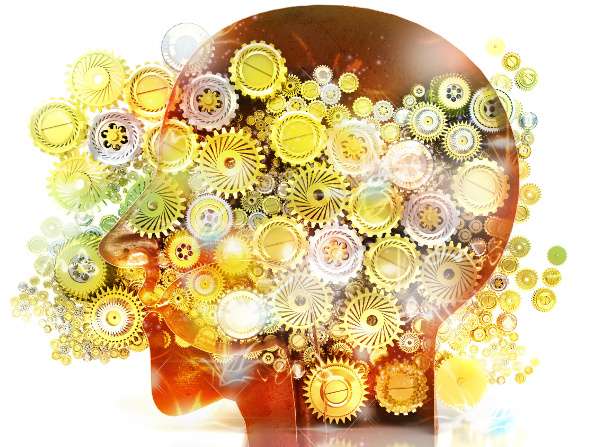Mindfulness and Biofeedback
Overview
Mindfulness is a meditative or therapeutic technique that engages the individual in his or her awareness of the present moment. It is particularly relevant in terms of their ability to recognize their own present feelings and reactions to events around them. When considering biofeedback and its goal of building awareness of an individual’s own psychophysiological reactions, via breathing, heart rate, muscle tension, temperature and sweating, it is not surprising that mindfulness and biofeedback are two fields that “marry” well together. Mindfulness and biofeedback both offer individuals helpful ways to respond to difficult emotions and physical pain. When asked about the benefits of combining the two methods, Dr. Inna Khazan explained, “Mindfulness enables us to pause long enough to make a choice of response. Skills learned through biofeedback are a large part of that chosen response.”
The BFE’s current offerings are the results of an on-going collaboration with Dr. Khazan, which we believe represent a clear and straight-forward method for clinicians to combine biofeedback and a mindfulness-based approach.
Team Leader
 Inna Khazan, Ph.D., is a Clinical Instructor of Psychology at Harvard Medical School, where she teaches biofeedback. A clinical psychologist specializing in health psychology and biofeedback, Dr. Khazan also maintains a private practice in Boston, working with clients presenting with various psychophysiological disorders, using both biofeedback and mindfulness-based approaches to psychotherapy. Dr. Khazan is the author of the book “The Clinical Handbook of Biofeedback: A Step-by-Step Guide to Training and Practice with Mindfulness” (April 2013, Wiley-Blackwell, ISBN: 978-1-119-99371-1).
Inna Khazan, Ph.D., is a Clinical Instructor of Psychology at Harvard Medical School, where she teaches biofeedback. A clinical psychologist specializing in health psychology and biofeedback, Dr. Khazan also maintains a private practice in Boston, working with clients presenting with various psychophysiological disorders, using both biofeedback and mindfulness-based approaches to psychotherapy. Dr. Khazan is the author of the book “The Clinical Handbook of Biofeedback: A Step-by-Step Guide to Training and Practice with Mindfulness” (April 2013, Wiley-Blackwell, ISBN: 978-1-119-99371-1).
Education
The BFE is working on expanding its available content on the topic of mindfulness and biofeedback. We invite you to explore the different types of live online or recorded presentations. For a more complete listing, click here.
Mindfulness and Biofeedback Webinar Recording: get introduced from Dr. Inna Khazan to the concept of mindfulness, and outline the applications of mindfulness-based skills, together with biofeedback, to various psychophysiological disorders.
Software
Mindfulness Suite, by Inna Khazan, Ph.D.
Dr. Khazan has worked with the BFE to create a software suite based on her book “The Clinical Handbook of Biofeedback: A Step-by-Step Guide to Training and Practice with Mindfulness”. This software package does the work for the clinician that desires to establish a biofeedback practice with a mindfulness acceptance-based approach. The suite includes a Psychophysiological Profile Assessment, Relaxation Profile Evaluation, respective Excel Reports for data interpretation of the assessments, training protocols divided by biofeedback modality and accompanying technical documentation, which includes relaxation scripts for different mindfulness-based relaxation exercises to perform with a subject.
What Is Biofeedback?
Biofeedback is a mind-body technique that involves using visual or auditory feedback to teach people to recognize the physical signs and symptoms of stress and anxiety, such as increased heart rate, body temperature, and muscle tension.
By learning how to control physical and psychological effects of stress using biofeedback, people are able to learn how to relax their minds and bodies and better cope with the symptoms of stress.
The goal of biofeedback is to make subtle changes to the body that result in a desired effect. This might include relaxing certain muscles slowing heart rate or reducing feelings of pain. Some of the functions that people can learn to control include:
- Blood flow
- Blood pressure
- Heart rate
- Muscle tension
- Pain perception
The Association for Applied Psychophysiology and Biofeedback defines biofeedback as a process that allows people to alter their physiological activity in order to improve health or performance. Utilizing precise measurement instruments, information about the body’s functions is provided to the user.
The presentation of this information—often in conjunction with changes in thinking, emotions, and behavior—supports desired physiological changes. Over time, these changes can endure without the continued use of an instrument.
Types of Biofeedback
There are many different types of biofeedback. The specific approach you choose to utilize might depend upon what you hope to accomplish and what your therapist or physician recommends.
Respiratory Biofeedback
Respiratory biofeedback involves wearing sensor bands around the chest and abdomen to monitor breathing rates and patterns. With training, people can learn to have greater control over their breathing rates which can help in a variety of situations including when experiencing anxiety.
Heart Rate Variability Biofeedback
With heart rate variability biofeedback, patients wear a device connected to sensors in either the ears or fingers or sensors placed on the wrists, chest, or torso. There is some evidence that heart rate variability biofeedback might be useful for a number of different disorders including asthma and depression.
Galvanic Skin Response
Galvanic skin response, also known as skin conductance, is a type of biofeedback that involves measuring the amount of sweat on the surface of the skin. This type of biofeedback is a useful marker for detecting levels of emotional arousal.
Aside from the obvious thermoregulatory function of sweat, emotional stimulation can also easily trigger sweating. The more strongly people are aroused, the stronger their skin conductance will be.
Blood Pressure Biofeedback
Blood pressure biofeedback involves wearing a device that provides information about the patient’s blood pressure. These devices often guide the user through relaxation techniques that may use visual cues, breathing exercises, or music.
While such devices have gained popularity, one study reviewing eight previous trials did not find convincing evidence that this type of biofeedback has any lasting long-term impact on hypertension.
Thermal Biofeedback (Temperature Feedback)
In thermal biofeedback, patients wear sensors that detect blood flow to the skin. Because people often experience a drop in body temperature during times of stress, such devices can help people better detect when they are starting to feel distressed. A low reading on one of these monitors can indicate a need to utilize some stress management techniques.
Neurofeedback (EEG Biofeedback)
Neurofeedback involves utilizing electroencephalography (EEG) to measure brain wave activity. Scalp sensors are connected to an EEG device. Neurofeedback is sometimes used as a non-invasive treatment for attention-deficit/hyperactivity disorder (ADHD), pain, addiction, anxiety, depression, and other disorders.
Electromyography
With electromyography, sensors are placed at various points on the body and connected to an EMG device. This device detects changes in muscle tension over time by monitoring electrical activity that results in muscle contractions.
Techniques
Biofeedback is often considered a type of training rather than a treatment. With training and practice, biofeedback can be used to help people develop new skills that may help them to better cope or perform.
A biofeedback session will often last between 30 and 60 minutes. A typical course of treatment often includes four to six sessions, although eight to 10 sessions are also not uncommon. The duration of treatment and the number of sessions required depends on many factors, including:
- How well you respond to the training
- The condition you are focusing on
- Your goals for treatment
During a typical biofeedback session:
- Electrical sensors will be connected to specific areas of your body, depending upon the type of response being measured.
- These sensors will be connected to a measurement device that will provide feedback on your physical responses.
- During your session, your therapist will guide you through different mental exercises that may involve visualization, meditation, breathing, or relaxation techniques.
- As you perform these activities, you will receive information on your physical response from the measurement device.
In order to be effective, biofeedback requires that people play an active role in their treatment. Success also usually requires that people regularly practice between training sessions.
What Biofeedback Can Help With
Biofeedback is particularly useful for managing stress as well as a variety of conditions that may be exacerbated by stress, including:
- Attention-deficit/hyperactivity disorder (ADHD)
- Anxiety
- Brain injuries
- Depression
- Digestive disorders such as irritable bowel syndrome (IBS)
- High and low blood pressure
- Mental health conditions
- Migraines
- Pain
- Physical reactions to stress
- Post-traumatic stress disorder (PTSD)
- Relaxation and stress management
- Tension headaches
Benefits of Biofeedback
Like other approaches to treatment, biofeedback has both its own set of upsides and downsides. It may not be right for everyone, so it is important to consider the benefits and risks before you determine if it the best choice for your situation. So what are some of the reasons why you might consider using biofeedback?
It’s Non-Invasive
Biofeedback may appeal in situations where other treatments have not been effective or where people are unable to take certain medications. Because biofeedback is non-invasive, patients may prefer it in situations where other treatments may be more invasive or disrupting.
It Can Complement Other Treatments
Biofeedback training can also be used as one part of a treatment approach. People often choose to utilize biofeedback to augment other treatments, including medication and relaxation strategies.
It Can Help Put You in Control of Your Emotions
Biofeedback also teaches people how to control their own responses in stressful situations, which can help people feel more in control and better able to manage the stress they may face in their daily life as well as the stress that results from another health condition.
Biofeedback can also have additional mental health benefits, including learning new techniques for coping with feelings of anxiety and managing emotional responses.
Biofeedback training can help people feel in charge, in control, and empowered with regards to their health.
Effectiveness
While researchers are not sure how or why biofeedback works, they do know that it has shown promise in the treatment of a variety of conditions. It has been accepted by many in the medical field as an alternative treatment for mood and anxiety disorders.
- One review found biofeedback and neurofeedback to have great potential for treating mood and anxiety disorders, including PTSD, generalized anxiety disorder, and depression in adults.
- Biofeedback, specifically neurofeedback, has been shown to improve concentration and decrease hyperactivity in individuals with ADHD.
- A meta-analysis found that biofeedback reduced depression and muscle tension and improved cognitive coping in patients with chronic back pain.
- One systematic review found that biofeedback helped improve cognitive processes, mood, and anxiety in the treatment of such clinically diagnosed disorders as ADHD, Alzheimer’s disease, anorexia, depression, schizophrenia, substance use disorder, and PTSD.
Things to Consider
Biofeedback is generally thought of as a safe procedure, but you should always talk to your physician or therapist about your options before you begin. Biofeedback is not necessarily right for everyone and other approaches might work better for your unique situation.
If you do decide biofeedback is right for you, be sure to check on the credentials of the professional treating you and be aware of the possible costs of your biofeedback training, including the cost per session and expenses associated with devices you may need to purchase.
Cost
Costs for biofeedback can vary considerably, often ranging from $35 to $85 per biofeedback session. Fees can vary depending upon the training, qualification, and experience of the biofeedback therapist.
There are also a number of in-home biofeedback devices and wearables available on the market. Such devices can range considerably in price, with some costing as low as $20 and more expensive ones costing thousands of dollars.
Biofeedback Devices
Biofeedback devices fall into two different categories. The first are those used by medical and mental health professionals. The second are those available on the consumer market for personal use. Remember that most of the devices you see available for purchase have not been evaluated for safety or effectiveness by the Food and Drug Administration (FDA). Talk to your therapist about which devices they recommend.
- Clinical biofeedback devices: Biofeedback devices utilized for clinical purposes are regulated by the FDA. These devices are often available through a biofeedback therapist’s office or the office of another health practitioner.
- Personal use biofeedback devices: A number of biofeedback devices can be purchased for personal, in-home use from various online retailers. Such devices often involve wearing sensors that record information and can then be plugged into a computer. Other wearable devices utilize sensors that then provide information via an app on your mobile device. These devices include wearable instruments ranging from muscle sensors to skin response units to brain wave monitors.
Before You Buy a Biofeedback Device
Personal use biofeedback devices often claim to target a number of different ailments, such as migraines, pelvic floor weakness, snoring, depression, ADHD, autism, and sleep disruptions. Spend some time examining the claims, which are often highly exaggerated and not supported by research.
How to Get Started
If you or someone you love thinks that biofeedback would be beneficial, start by asking your primary care doctor for a referral to a trusted practitioner. It is also helpful to check with your health insurance company to see if your policy will cover any or all of this type of treatment.
Biofeedback is one option that may help you gain greater control over your physical responses and behaviors. Consider the potential benefits, risks, and costs associated with this type of training before you decide if it might be right for you.




